“Mockingbird” at 50 still soars
January 27, 2011
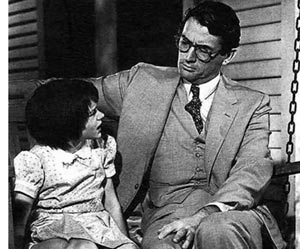 One of the most beloved books ever—adapted unforgettably on screen with Gregory Peck as stalwart Southern lawyer Atticus Finch—“To Kill A Mockingbird” comes to the Los Angeles stage as The Production Company celebrates the classic’s 50th anniversary.
One of the most beloved books ever—adapted unforgettably on screen with Gregory Peck as stalwart Southern lawyer Atticus Finch—“To Kill A Mockingbird” comes to the Los Angeles stage as The Production Company celebrates the classic’s 50th anniversary.
The only book author Harper Lee ever published, it became an instant best-seller, Pulitzer Prize winner and, in a 1999 Library Journal poll, was voted “Best Novel of the Century.” In the intervening years, Lee rarely granted interviews, and outside of a few essays, she published nothing else.
But no one who ever read her novel or saw the movie could possibly forget the indelible characters of Atticus, Scout, Jem, Dill and Boo—or the profound moral lessons of courage, principle, tolerance and justice—that Harper Lee wove from her own experience growing up in the South.
The Production Company recently relocated to a new venue in Hollywood’s Theatre Row District at 6760 Lexington Avenue, just one block East of Highland Avenue and one block North of Santa Monica Boulevard. Learn more about the company history here, and get your tickets online here.
Posted 1/27/11
Calling all construction lookie-loos
January 27, 2011

As every schoolchild knows, it’s nearly impossible to walk by a construction site without stopping to peek through the fence and watch the hard hats and heavy equipment at work. Now county photographers are making it easy for the public to peer through a virtual fence and check out the progress of the Civic Park as it takes shape outside the county Hall of Administration.
New photos are being posted each month on the Civic Park website, which also includes construction updates, news about traffic detours and parking and renderings of what the project will look like when it’s scheduled to be completed by the summer of 2012.
The park, which broke ground last summer, is on schedule despite the record winter rains, says Dawn McDivitt, a capital projects manager in the county’s Chief Executive Office who’s been overseeing the building effort. “It was a huge challenge, and [the contractors] came to the table and have been very accommodating.
“I can’t say enough about how smoothly everything is going.”
Workers have wrapped up much of the demolition and now can begin the building phase.
When completed, the 12-acre park will provide a green oasis stretching from Grand Avenue at the Music Center to Spring Street at City Hall. The four-level park will feature amenities including performance lawns, ADA-accessible walkways, a community terrace area showcasing plants from around the world and a restored historic Arthur J. Will Memorial fountain, complete with a new wade-able membrane pool.
The county workforce, McDivitt says, has been “extremely patient and very inquisitive” about the park construction in their midst.
“Out of all of our capital projects, it is one of the most exciting things that’s been happening, having it in our own backyard.”
Posted 1/27/11
Season tickets go on sale at the Bowl
January 27, 2011
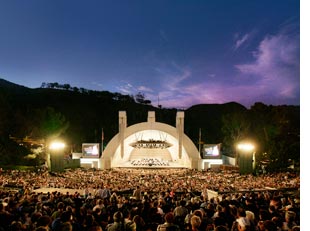 For decades, summer nights at the Hollywood Bowl have been a highlight of Southern California’s cultural scene. The Los Angeles Philharmonic celebrates its 90th season at the Bowl this year, and the ticket window is now officially open for current subscribers and those looking to subscribe for the first time to one or more of the Bowl’s themed concert offerings.
For decades, summer nights at the Hollywood Bowl have been a highlight of Southern California’s cultural scene. The Los Angeles Philharmonic celebrates its 90th season at the Bowl this year, and the ticket window is now officially open for current subscribers and those looking to subscribe for the first time to one or more of the Bowl’s themed concert offerings.
So what’s being offered this year? Five-concert packages for Classical Tuesdays and Classical Thursdays, featuring Music Director and Principal Conductor Gustavo Dudamel and special guest conductors including Leonard Slatkin and violinist Itzhak Perlman; a pair of five-date Weekend Spectaculars that feature the likes of Sarah McLachlan, John Williams, Dolly Parton and a full staging of the musical “Hairspray.” Of course, there’s also the Bowl’s legendary Fireworks Spectaculars.
A pair of four-date Wednesday evening Jazz at the Bowl series will showcase such artists as Bobby McFerrin, Robert Cray, Quincy Jones, Hugh Masekela, Gladys Knight and George Benson.
Sunday nights, KCRW’s World Festival returns with a pair of three-date series exploring the exotic worlds of Japanese pop with the Yellow Magic Orchestra, Reggae Night with Ziggy Marley and special guests, a tribute to French singer-songwriter Serge Gainsbourg, among others.
So what are you waiting for? And if this will be your first visit to the Hollywood Bowl, this newcomer’s guide will tell you everything you need to know.
Posted 1/27/11
Chabrol thrillers at LACMA
January 27, 2011
With generous dollops of envy, greed, lust and revenge, the late French filmmaker Claude Chabrol served up a darkly delicious stew of mystery and suspense in more than 70 films during the course of a career spanning just over 50 years. Though frequently compared to Alfred Hitchcock, Chabrol lacked the master’s lighter touch and commercial instincts. His characters never fully emerge from the haunted shadows of their own tortured psyches.
This week the Los Angeles County Museum of Art begins a specially curated mini-series of Chabrol’s extraordinary, but in America little-seen, body of unforgettable work. The program offers four double-bills over the next two weekends, and kicks off Friday, January 28, with La Femme Infidèle (1969) and The Bridesmaid (2004).
More information on the whole series may be found in LACMA’s detailed film schedule. And everything you need to know to plan your visit—from directions and parking to dining options—can be found right here.
Posted 1/27/11
Gala bow for Valley’s newest venue
January 27, 2011
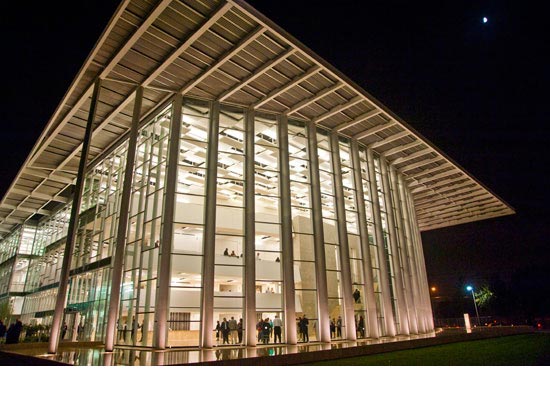
Blame it on Natalie Portman.
If you want to see “Swan Lake” in L.A. before the Oscars, there’s really only one show in town. And good luck getting tickets to the one-night-only, Feb. 8 performance by the Russian National Ballet.
That programming coup—coming on the heels of Portman’s star turn in the Academy Award-nominated “Black Swan,” which prominently features the Tchaikovsky-scored ballet—belongs not to Royce Hall or the Dorothy Chandler Pavilion but to the newest venue on the local stage: the Valley Performing Arts Center.
The Center, which has its gala opening Saturday, is making its mark with a diverse inaugural season that ranges from speakers like Joan Rivers, Arianna Huffington and Shirley MacLaine to the musical stylings of artists as varied as Patti LuPone, Marvin Hamlisch, Rosanne Cash, Loudon Wainwright III and Dame Kiri Te Kanawa.
And “Swan Lake,” with its almost-too-good-to-be-true Hollywood tie-in, has proven to be a hot ticket for a new audience base.
“I should say, of course, I intuited this,” laughs Robert Bucker, executive director of the center and also dean of the Mike Curb College of Arts, Media, and Communication at California State University Northridge, where the new performing facility is located.
“An amazing number of single ticket purchasers have just wanted to see the ballet.”
Bucker says there also have been “robust” single ticket sales for LuPone and Mandy Patinkin, appearing together on May 21, and for Hamlisch’s Feb. 26 appearance with Betty Buckley, who won a Tony for her performance in “Cats.”
“There was a tremendous response to Joan Rivers [March 1], as you might imagine,” he says.
Bucker says season ticket sales also are going well, with more than 800 sold for performances in the 1,700-seat hall.
Booking the center to serve all of its constituencies—people from San Fernando Valley communities, CSUN and the region as a whole—requires a certain nimbleness, along with connections to performers’ managers around the world.
“The moment that you enter into that community of facilities—I wouldn’t say it’s cutthroat competition, but when opportunities present themselves you truly take advantage of the opportunity,” Bucker says.
Having a high-profile new $125-million facility helps. “Folks are really excited about being part of ‘rubbing off the new,’ ” Bucker says. “It’s a very desirable place for an artist to perform.”
“It’s gorgeous. It’s like Disney Hall in the Valley,” adds artist relations manager Catherine Kimmel, who helped book the talent for the gala with the show‘s director, Robert Egan.
The opening of the 166,000-square-foot Valley Performing Arts Center represents the culmination of decades of planning. The project is being funded by a public-private partnership, and has received $80 million in federal, state and county funds—including $2 million from the office of Supervisor Zev Yaroslavsky and $500,000 from the office of Supervisor Michael D. Antonovich— and $30 million from private individuals, corporations and foundations. The university is continuing a capital campaign to raise the rest of the money.
The tickets for Saturday’s red carpet gala, complete with a post-performance black-tie dinner, are still available for $1,000 a pop. (Call (310) 201-5033 for more information.) But those on a tighter budget can still get a ticket for the show and a champagne reception for $75 by calling the center’s box office, (818) 677-3000.
The gala promises to be a variety show in every sense of the word. How often do you get to see Calista Flockhart performing a bit of Shakespeare with fellow players including Benjamin Bratt, Keith David, Steven Weber, Noah Wyle, Jane Kaczmarek and Tyne Daly? Or to applaud Daly singing “Everything’s Coming Up Roses” from “Gypsy” as part of a Broadway segment that also features Davis Gaines singing “Music of the Night” from “Phantom of the Opera?” Or to watch Andy Garcia introduce Arturo Sandoval, the Cuban-born jazz trumpet great he portrayed in an HBO movie, opera star Carol Vaness sing Puccini and American Ballet Theatre stars Gillian Murphy and Jose Carreno perform a pas de deux from “Don Quixote?” There’s even a Cheech Marin comedy segment, not to mention taiko drummers, CSUN’s Jazz “A” Band and the Northridge Singers. (The full line-up is here.)
If you can’t make the gala, and are holding out hope for “Swan Lake,” don’t despair.
“We’ve started a waiting list,” Bucker says.
Posted 1/27/11
Curtain call for Hollywood costumes
January 26, 2011
Like many stars of a certain age, they no longer get out much. Still, as Oscar season approaches, they deserve their due. Some made history with Mary Pickford and Charlie Chaplin. Some were themselves Academy Award-winners.
True, most have spent the past several years in a vault in the Natural History Museum of Los Angeles County. But the 250 or so historic movie costumes—owned, improbably, by Los Angeles County—represent one of the most well preserved aggregations of stardom in Hollywood.
“The bulk of people don’t know about it, but it’s a very important collection,” says Glenn Brown, archivist at the MGM Corporate Archives. “Its pieces are from some of the earliest days of film, things from the ‘20s and ’30s, donated by the stars themselves. Things you hardly ever find anywhere.”
Chaplin’s “Tramp” costume is there. So are Fred Astaire’s tap shoes, Charlton Heston’s “Ben Hur” tunic and the green-sprigged dress (battered but unbowed) that Scarlett O’Hara wore in “Gone With The Wind” at the barbecue at Twelve Oaks. There’s also the pink Howard Greer ball gown that Pickford wore in her first talkie, “Coquette.”
The Natural History Museum has amassed not only many of the most important costumes from the earliest days of the movies, but also a trove of historic film props and other movie mementos, from Lon Chaney’s makeup kit to preserved locks of Pickford’s golden hair, lopped off when she famously bobbed it. Back in the day, such items were considered so insignificant that studios routinely burned, tossed or reused them.
Beth Werling, who manages the collection along with a wide range of three-dimensional artifacts for the museum, says it’s “the biggest collection of its kind in a public institution.” That “public” qualifier is important, historians say, because in recent decades, Hollywood memorabilia has become increasingly privatized at institutions like the Fashion Institute of Design & Merchandising and in individual collections, such as one owned by actress Debbie Reynolds.
“Things are everywhere,” says Shelly Foote, a longtime historian in the Smithsonian Institutions’ costume collection. The county’s collection is essential for pieces from the ‘20s and ‘30s, says Foote, who turned to the Natural History Museum in researching her forthcoming book on the designer Greer.
Of course, a public institution best known for dinosaurs and rock collections might be the last place most people would go digging for Hollywood glamour.
“But when the Natural History Museum was founded in 1913,” says curator Werling, “it was called the Los Angeles Museum of History, Science and Art. So we’ve collected Los Angeles history since the very beginning.”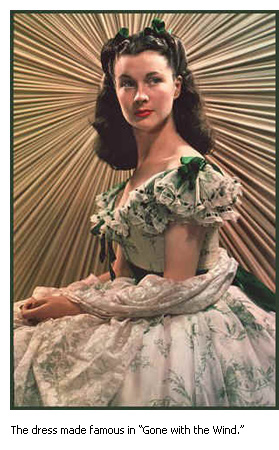
The movie collection began in 1930, she says, after studios and stars in the nascent industry began donating items—some just to get rid of them, others because prescient museum officials felt they might be of historical significance someday.
“The then-curator simply contacted everyone and anyone in the industry at the time and asked for donations,” says Werling. Typically, she and others say, such requests elicited shrugs and amusement.
“Costumes were a means to an end,” explains Deborah Landis, director of the David C. Copley Center for Costume Design at UCLA. “The movie was all that mattered. Just as sets are broken up and props go back to the prop house, costumes were reused and re-dyed, and the hems were cut and remade, and nothing was kept because nothing was valued.”
Werling credits that benign disregard for the museum’s unparalleled cache of Chaplin memorabilia, donated for the most part by the actor himself.
“He was a very, shall we say, cautious individual when it came to money and I don’t think he would have ever given anything away if he had any idea what these items would later be worth,” says Werling.
“But the motion picture industry was only about 25 years old then, and it was the beginning of the studio era. It was still being argued whether it was even an art form. And I think people were just flattered to think that anyone saw what they were doing as something worth saving.”
As a result, the county’s collection ranges from the roller skates Chaplin wore in “Modern Times” to his burlap boots from “Gold Rush.” “He donated his Tramp costume from ‘City Lights’ and, as a result, we have the only complete one in still in existence,” Werling says.
Since then, she says, items have come from a variety of sources. Carl Laemmle, who founded Universal, donated a number of early items. A more recent cache came from the Los Angeles County Museum of Art after curators there refocused their costume collection more on couture and fashion. Still others were donated by collectors who decided their items deserved museum-level care.
A motion picture costume is more than just clothing, says veteran costume designer Jeffrey Kurland, who designed the costumes from last year’s sci-fi thriller, “Inception”.
“It’s character-driven. It helps build a visual picture of a character,” he says. “Think of Scarlett O’Hara in ‘Gone With The Wind’ in that barbecue dress, that garden print, so young and frivolous and puffy. That’s how we meet her. And then watch the progression as war comes and her character changes.
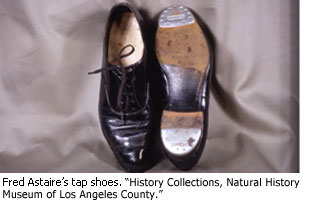 “The clothes become slimmer and tighter, until there she is toward the end, in that garnet red dress with Rhett Butler. Think of the line, the fit, the silhouette. Look where she has finally traveled. The clothes show her character’s arc.”
“The clothes become slimmer and tighter, until there she is toward the end, in that garnet red dress with Rhett Butler. Think of the line, the fit, the silhouette. Look where she has finally traveled. The clothes show her character’s arc.”
Local museum-goers have seen little in recent years of the county’s collection, partly because of space constraints and partly because of the fragility of the costumes themselves. The barbecue dress from “Gone With The Wind”, for example—which came to the museum from LACMA—is undergoing extensive repair work because time has all but shattered the costume’s lining, says Werling.
But mostly the collection has remained backstage because of an ongoing rebuilding and transformation project leading up to the Natural History Museum’s 2013 Centennial. So far, the initiative has restored and seismically retrofitted the Beaux Arts museum building and added the new “Age of Mammals” exhibit. But construction has closed the small area where the costumes used to be shown, a few at a time, in glass cases.
A new California history hall is expected in late 2012, just before the museum’s centennial celebration. When it opens, the public can expect to see a lot more of Hollywood, says Werling. Until then, the public’s best hope is to look for the items that are frequently placed on loan to other exhibitions.
Or look for events like the one set for February 4-5 at William S. Hart Park in Newhall—a “ChaplinFest” celebrating the 75th anniversary of “Modern Times,” whose closing scene, with its poignant rendition of the song “Smile,” was filmed nearby on the Sierra Highway.
It was one of Chaplin’s most important films, depicting the tragicomic breakdown of a factory worker beset by the dehumanization of the industrial era. At one point, in fact, the Tramp is swallowed up by the giant gears of the assembly line and run through the machine in his striped workman’s outfit.
On display at Hart Park will be those iconic overalls Chaplin wore—ready for their close-up, even now.
New report “sheds light on darkness”
January 25, 2011
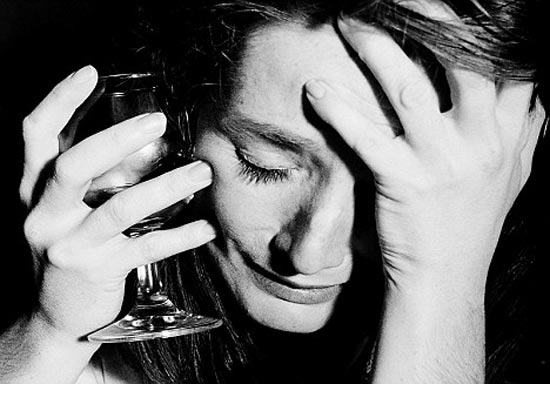
Increasing numbers of Los Angeles County residents are finding themselves in a blue state. And it has nothing to do with political affiliation.
A new report from the Department of Public Health shows that 13.6% of adults in the county report having been diagnosed with depression at some time in their lives—an increase of nearly 50% between 1999 and 2007. The rates went up for all adults, but the increases were most pronounced for those from 25-29 and 60-64. The condition continues to affect more women than men (16.6% compared to 10.3%) and is more common among whites and African Americans (17% and 16.6% respectively) than Latinos (12.4%) and Asians/Pacific Islanders (6%.)
The report said that those who have been diagnosed with depression are likelier than others to smoke and drink heavily and to get less exercise. It found that more than 35% of those who said they’d been diagnosed with depression also had chronic health conditions such as diabetes, heart disease and obesity. And it reported that many in the county said they’d been unable to afford mental health care or counseling when they needed it.
Some of the increase in reported depression can be attributed to greater public awareness of depression and better diagnosis of the problem, as well as to a possible decrease in stigma attached to the condition, said Dr. Susie Baldwin, chief of the department’s Health Assessment Unit, which produced the report.
Even so, depression represents a huge personal and social challenge.
“From any perspective, depression takes a large toll in terms of disease burden, and is the most common mental health problem. We need to ensure that those suffering from depression get diagnosed early and receive timely care,” Dr. Jonathan E. Fielding, the county’s Director of Public Health, said in a press release.
“The takeaway is that this is very common and not something that is the fault of the individual,” Baldwin added. She noted there are many ways to help—from family members being patient with a depressed loved one to public policy-makers providing funding for mental health programs. The report also lists several recommendations for things employers and companies can do to help with depression in their workforce.
The report emphasizes that the best way to fight depression is to get help from a mental health professional. It said that free and low-cost help is available and urged anyone who needs it to call the county Department of Mental Health hotline, (800) 854-7771. Other resources listed include the Didi Hirsch Mental Health Services agency, which has a 24-hour suicide crisis line (877-727-4747), along with community outreach programs and other assistance available.
The report draws on information gathered as part of the L.A. County Health Survey, conducted every three years from thousands of randomly-selected telephone respondents. Because it does not include the worst years of the economic recession, it does not indicate whether increasing financial stresses, including job losses and home foreclosures, are pushing depression rates even higher in Los Angeles County.
Those factors will be examined in the 2010 survey, with initial results not expected until early 2012. “It’s going to be interesting when we get the new data,” Baldwin said. The next report also will indicate how many people are currently feeling depressed—not just whether they’ve ever been diagnosed in the past.
Posted 1/25/11
Overdue Topanga Library back on track
January 25, 2011
For a while, Westside book lovers feared there might be no happy ending. But after nearly a year of revisions, disputes and other construction issues, the long-delayed Topanga Library is back on schedule again.
After months of negotiations with the county, the project’s main contractor, FEI Enterprises, Inc., has agreed to resolve scores of outstanding or disputed change requests that had helped put the project at least a year behind schedule.
A change order for $645,651.52 approved today by the Board of Supervisors settled the last of the differences, clearing the way, among other things, for FEI to finish the project.
As a result, the library is now scheduled to open this fall.
“We’ve worked out the issues between us,” said Kamel Youssef, senior capital project manager at the Los Angeles County Department of Public Works. “The project is making good progress now.” (Click here for a photo gallery of early work on the library.)
The various disputes and delays, outlined in a letter to the board from Chief Executive Officer William T. Fujioka, ranged from planning problems to complications resulting from the discovery of Native American artifacts. Some were resolved separately by Public Works while others ended up being settled in the change order approved by the board on Tuesday.
Long sought by Topanga residents, who for generations have had to rely on bookmobiles and other communities’ libraries, the new facility—now estimated to come in at a total cost of $19.5 million—will bring a 42,000-volume permanent library to North Topanga Canyon Boulevard in the center of the mountain town.
Filled with civic art and built to the latest green construction standards, the new building will cover more than 11,000 square feet, featuring a reading area for adults, a community meeting room, an after-school homework center for students, teen and children’s areas, public-access computers, express-service checkout machines and a ground-floor garage.
The project, which broke ground in 2008, originally had a tentative opening date of summer 2009, which was stretched by various construction delays into the spring, and then the summer of 2010. But according to the board letter, disputes with the contractor began to arise early that year after FEI submitted a series of requests for costs of additional work it claimed had to be done because of alleged deficiencies in plans and specifications and various site-related issues.
“While there may have been some merit to some of these assertions, FEI’s proposals . . . lacked sufficient clarity, detail and justification to support the requested costs,” the board letter said. “Also, Public Works believed that FEI’s performance of the work was much slower than required by the approved schedule due to a lack of manpower and changes in FEI’s management staff.”
Posted 1/25/11
Perlman plays Disney Hall
January 20, 2011
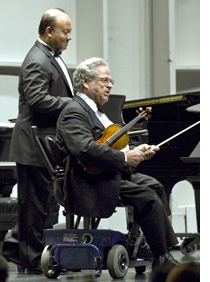 Internationally renowned violinist Itzhak Perlman returns to Walt Disney Concert Hall in recital with Sri Lankan-born Rohan de Silva for a special program featuring violin and piano sonatas by Beethoven, Saint-Saëns and Leclair.
Internationally renowned violinist Itzhak Perlman returns to Walt Disney Concert Hall in recital with Sri Lankan-born Rohan de Silva for a special program featuring violin and piano sonatas by Beethoven, Saint-Saëns and Leclair.
The performance begins Tuesday, January 25, at 8:00 p.m.; full details may be found here.
Posted 1/20/11




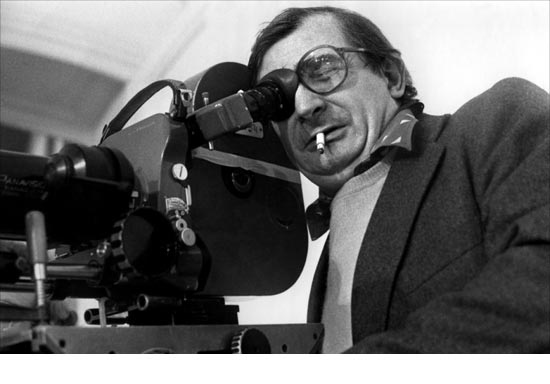
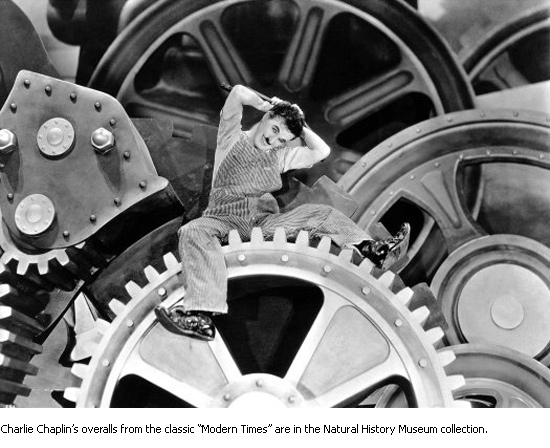
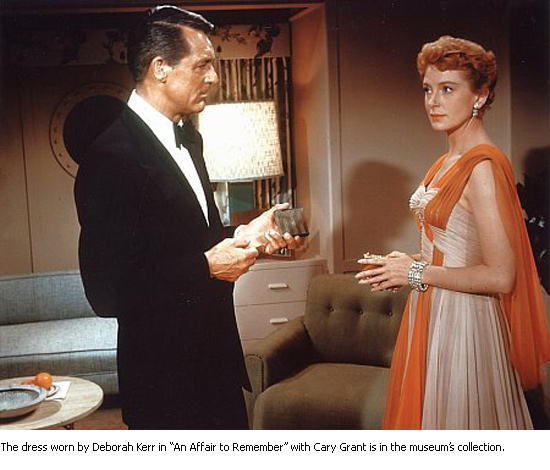
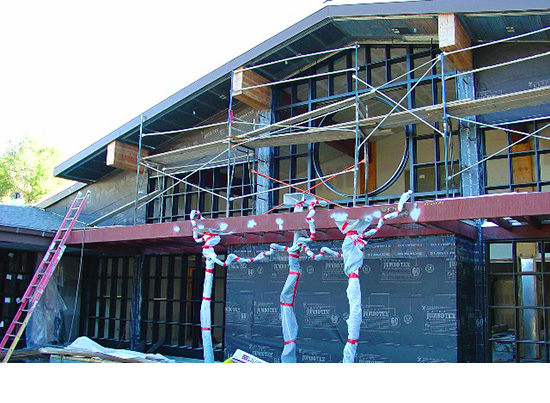





 Check for the latest closure information
Check for the latest closure information








